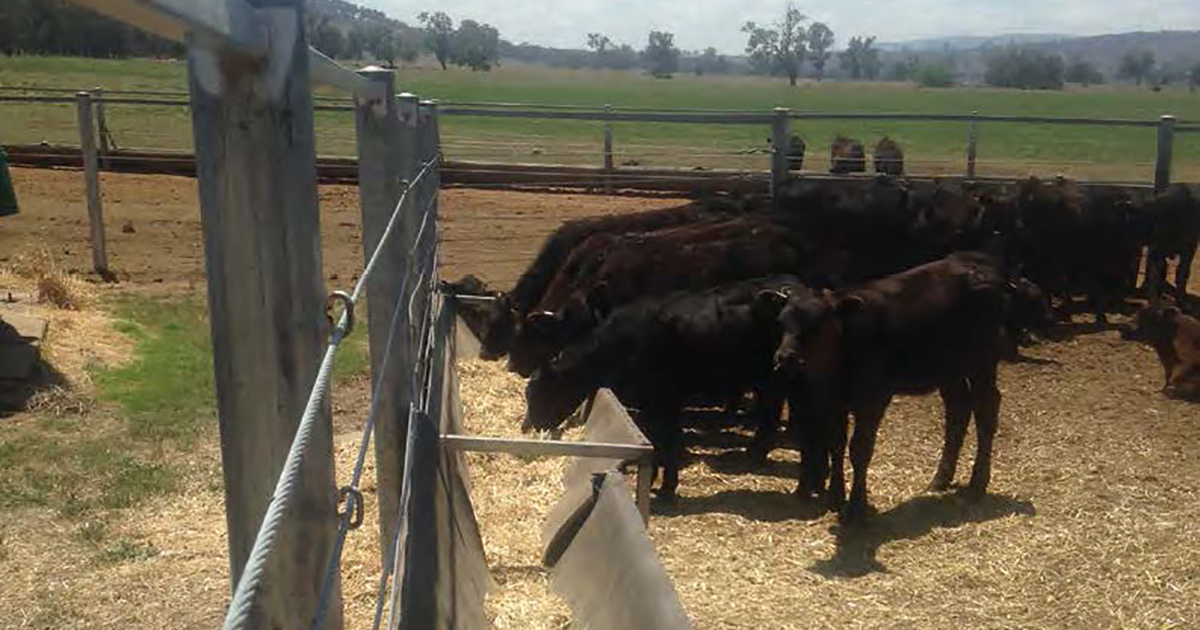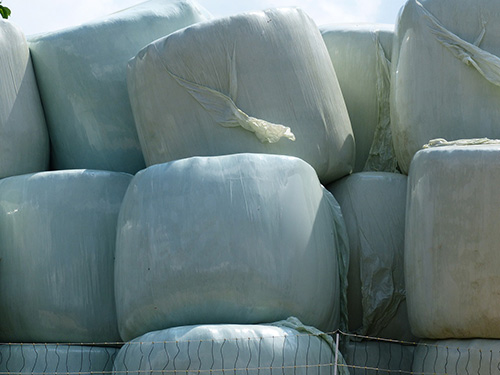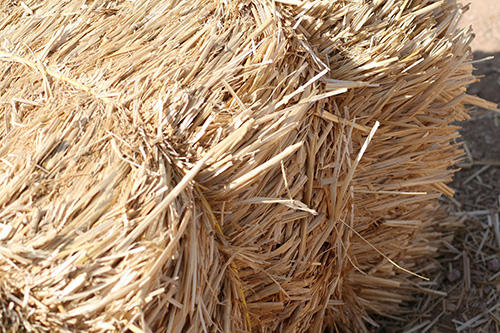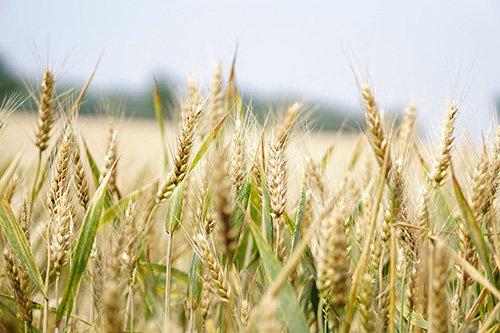Balancing nutrition and cost: A guide to feed options for livestock graziers
As a livestock grazier, you know the challenges of managing your stock during drought. With unpredictable weather patterns and the ever-present threat of drought, it's essential to have a plan in place to ensure your animals are well-fed and healthy.
One crucial aspect of preparing for drought, is assessing which feed commodities to purchase to feed for your sheep and cattle. While it can be tempting to simply purchase the cheapest option available, it is important to take a strategic approach to ensure you are providing your animals with the necessary nutrition to maintain their health and productivity.
When comparing different types of feed, it is useful to consider their cost-effectiveness, in terms of their energy and protein content. Two common metrics used for this purpose are:
- Cents per megajoule (MJ) of metabolisable energy (ME). This compares the cost of feed per unit of energy it provides. Energy is the primary requirement of livestock, and meeting their energy needs is critical to maintaining their health and productivity. When comparing different feed options, it is important to choose the one that provides the most energy at the lowest cost.
- Dollars per kilogram (kg) of protein. This is another useful measure for comparing feed options and allows farmers to identify the most cost-effective sources of protein for their livestock. Protein is an essential nutrient for growth and development, and it is important to ensure that livestock receive an adequate amount.

Cattle feeding at a trough.
The Drought and Supplementary Feed Calculator App is one useful tool for assessing the cost-effectiveness of different feed options. This app, developed by the New South Wales Department of Primary Industries, allows farmers to compare the cost and nutritional value of different feed options based on their energy and protein content. It also considers factors such as transport costs and availability to provide a comprehensive picture of the cost-effectiveness of different feed options.
In addition to comparing the cost-effectiveness of different feed options, it is also important to consider the nutritional requirements of sheep and cattle during drought. Stock have different nutritional needs at different stages of their life, and these needs may change depending on level of activity and stage of production.
Nutritional requirements of sheep and cattle during drought
Consulting with an LLS livestock officer or nutritionist can help determine the most appropriate feed options for the animals based on their specific nutritional requirements.
Pulse grains, such as chickpeas and lentils, are a good source of protein and energy for sheep and cattle. They are often used as a supplementary feed during drought, when pasture and hay are in short supply. Pulse grains can be fed whole or as a pelletised feed, often with a reduced risk of acidosis compared to cereal grains.
Hay has long been a staple feed for cattle in dry times. It is important to choose good quality hay that is free from mould and other contaminants. The nutritional value of hay varies depending on its maturity and the species of grass or legume it comes from. In general, younger, greener hay is more nutritious than older, more mature hay.
Feeding straw to livestock during dry times is a common practice, due to its availability and as a source of fibre. However, it is important to consider the cost-effectiveness of this approach. Straw has a low nutritional value and often requires additional supplementation to meet the animal's dietary needs.
Additionally, the cost of transporting and storing large quantities of straw can quickly add up. While straw can be a useful component of a feed ration in certain circumstances, it is important to consider alternative sources of feed and carefully evaluate the costs and benefits of using straw as a feed source during times of drought or feed shortages.
Whole cottonseed is another popular feed option for sheep and cattle. It is high in protein and energy, with the ability to feed in piles on clean ground with minimal wastage.
Protein meals are a popular feed source for livestock and are typically made from soybeans, canola, and other oilseeds. These meals are high in protein and can be an excellent source of essential amino acids, important for growth and development. Protein meals can be used as a supplement to other feed sources, such as hay or pasture, helping ensure a balanced diet. Protein meals are easy to store in bags or bulk containers, and transport long distances without spoiling. This makes them an excellent choice for producers without access to local feed sources. Additionally, protein meals are often cost-effective compared to other feed sources, such as grain. Be sure to consider how to feed protein meals to stock, as there will be high wastage if fed on the ground.
Silage
Silage continues to be a popular feed option for livestock graziers, who can grow their own. Silage is made by fermenting green crops such as corn, sorghum, or grass, which is then stored in airtight wrapped bales or pits. Silage does not get better with age, with wrapped silage often having a shelf life of around two years. Once harvested and stored, the quality of the silage remains the same, but can deteriorate if not stored correctly. Preventing air getting in, helps to prevent spoilage and a loss of nutritional value. Silage is more suited as a cattle feed than sheep, from a disease and management perspective. Diseases such as listeriosis, botulism and poisonous toxins can occur in poorly made and managed silage.

Silage bales stacked.
Transporting silage can be challenging and often not cost-effective, due to the high level of water content (often over 50%) making transportation expensive and difficult. It is crucial to also consider the nutritional content of silage. The quality of the silage depending on the quality of the crop at the point of harvest. It is important to harvest the crop at the correct time to ensure optimal nutritional content. Factors such as weather conditions, maturity of the crop, and harvesting techniques can all affect the quality of the silage.
Fortified molasses and urea licks can be a great addition to a feeding program when adequate dry pasture is available. These supplements are designed to provide additional nutrition to grazing animals, particularly in areas where the quality of the pasture may be lacking. Fortified molasses and urea licks can benefit livestock by:
- Improving digestibility of low-quality forages. Urea, in particular, can help break down the fibre in low-quality forages, making it more digestible for the animal, increasing consumption of forage and the animal's overall health and productivity.
- Good source of supplemental protein for grazing animals. Urea is a cost-effective source of non-protein nitrogen that can be converted into protein by the animal's rumen bacteria. This helps supplement the protein content of low-quality forages and improve the animal's overall health.
- Fortified molasses licks can be a great source of energy for grazing animals. Molasses is a high-energy feed, providing a quick energy boost to animals when they need it most. This can be particularly helpful during periods of high demand, such as lactation or pregnancy.
- Fortified molasses and urea licks are convenient and can be placed in strategic locations around the pasture, increasing pasture utilisation across the entire paddock, as they graze areas they may not normally.
Cereal grains such as wheat, barley and corn are commonly used as a source of energy in sheep and cattle diets. These grains are high in starch and provide a quick source of energy. Fed in moderation, they can help improve animal performance and promote weight gain. Excessive consumption of cereal grains can lead to health problems such as acidosis, a condition where the pH in the rumen drops, leading to digestive upset, decreased feed intake or possible death. It is important to work with a nutritionist, to develop a balanced diet for livestock that includes appropriate amounts of cereal grains to meet their energy needs while also promoting digestive health. Gorging of individuals within a herd can be a high risk with cereal grains. Slow introduction is essential to minimise this risk and allow the rumen to adjust to new feeds (as this can take up to 10days).

Straw bale.
Buffers can be used to neutralise excess acid production in animal feed, including sodium bicarbonate, calcium carbonate, and magnesium oxide. These buffers can be added to the feed in various amounts, depending on the type of grain and the needs of the animal. It is important to note that overuse of buffers can be harmful to the animal, so it is important to work with a veterinarian or animal nutritionist to determine the appropriate amount for each animal.
Cereal grains are a valuable source of nutrition for livestock, but proper use of buffers and other nutritional components, such as salt and calcium, are required in the diet to avoid health problems. With the proper use, cereal grains can provide a high-quality and cost-effective source of nutrition for livestock.
Worked example comparing commodities
To compare commodities based on cents per megajoule of energy per kilogram on a dry matter basis, we need to consider the energy and dry matter percent content of each commodity. Let's compare wheat and lucerne hay in the below worked example.
Wheat
Cost per tonne = $390 DM = 90% ME = 13 MJ/kg DM
First, determine the cost per kilogram of dry matter. We must multiply the cost per tonne by 10 and then divide by the dry matter percentage:
Cost per kg DM = ($390 × 10) ÷ 90 = 43c/kg DM
Now, to determine the cost per energy unit we must divide the cost per kilogram dry matter (determined above) by the energy concentration of the feed. Wheat has an average energy value of 13 MJ/kg. Therefore:
Energy cost = 43c/kg ÷ 13 MJ/kg = 3.3c/MJ

Wheat field.
Lucerne hay
Cost per tonne = $400 DM = 90% ME = 9.5 MJ/kg DM
Cost per kg DM = ($400 × 10) ÷ 90 = 44.4c/kg DM
Energy cost = 44.4c/kg ÷ 9.5 MJ/kg = 4.6c/MJ
Based on this calculation, we can see that lucerne hay is slightly more expensive per kilogram of protein than wheat.
To compare commodities based on dollars per kilogram of protein, we need to consider the protein content of each commodity. Let's compare lupins and urea lick blocks in the below worked example.
Lupins
Cost per tonne = $600 DM = 90% CP = 32%
Cost per kg DM = ($600 × 10) ÷ 90 = $66/kg DM
Lupins have an average crude protein percentage of 32%. Therefore:
Protein cost = $66/kg ÷ 32 = $2.09/kg CP
Urea lick blocks
Cost per 20 kg block = $36 CP = 40%
Cost per kg = $36 ÷ 20 = $1.80/kg
Therefore:
Protein cost = 1.80/kg ÷ 40 × 100 = $4.5/kg CP
Based on this example we can see that the protein cost of urea lick block is nearly double that of lupins.
Converting feeds to a cost per tonne on a DM basis is important when calculating a cost comparison on the feeds, as various feeds contain different amounts of water.
The cost of machinery used for feeding livestock is also an important consideration when choosing a feeding strategy during drought. Different feeding options require different machinery. For example, hay and straw feeding may require a bale feeder, while silage feeding may require a silage wagon or chopper.
These pieces of equipment can vary greatly in cost and size, with larger and more advanced machinery typically being more expensive. Maintenance and repair costs should also be considered. Weigh the benefits of each feeding option against the cost of machinery allows for an informed decision on the best strategy for the operation.
What to remember
Remember, if you are supplementary feeding, others will be too. This will generally cause the costs to rise, which needs to be factored into the decision-making process. Costs will generally increase as feeding goes on. Buying in bulk at the outset may be a cost-effective approach, however, consider possible storage and spoilage factors.
Finally, testing the feed before purchasing large quantities, can help you assess the quality and nutritional value. Feed samples can be sent to a laboratory for analysis, which may reveal any deficiencies in the feed, allowing an informed decision about whether it is suitable for your stock.
In conclusion, feeding sheep and cattle during drought requires careful consideration of a range of factors, including cost-effectiveness, energy and protein content, and nutritional requirements. By comparing feed options based on cents per MJ of ME and dollars per kg of protein, using tools such as the Drought and Supplementary Feed Calculator app, and consulting with experts in animal nutrition, informed decisions can be made to ensure livestock receive the nutrients they need to stay healthy and productive, even in challenging conditions.
For more information
Contact your nearest Local Land Services office on 1300 795 299.
Download the PDF of this article - Balancing nutrition and cost: A guide to feeding options for livestock graziers. PDF, 460.91 KB
Download our Guide to confinement feeding sheep and cattle in NSW PDF, 5591.67 KB
References
Department for Environment and Water, Government of South Australia. (2019). Dry times: Comparing the costs of feed, transport and drought-related financial assistance.
New South Wales Department of Primary Industries. (n.d.). Drought and Supplementary Feed Calculator App.
McLennan, S. R., & Wichtel, J. J. (2019). Feeding livestock during drought: challenges and opportunities. Animal Frontiers, 9(4), 6-12. doi: 10.1093/af/vfz021
Narvaez, N., Wang, X., & Xu, Z. (2017). Cost-effective feed formulation for ruminants: a review. Animal Production Science, 57(3), 401-407. doi: 10.1071/AN16371
Oltjen, J. W., & Beckett, J. L. (1996). Role of ruminant livestock in sustainable agricultural systems. Journal of Animal Science, 74(6), 1406- 1409. doi: 10.2527/1996.7461406x
Rutter, S. M., & Champion, R. A. (2018). Recent advances in understanding the role of nutrition in dairy cattle fertility. Animal Production Science, 58(4), 613-619. doi: 10.1071/AN16072
Written by Max Newsome - Northern Tablelands LLS Land Service Officer - Livestock